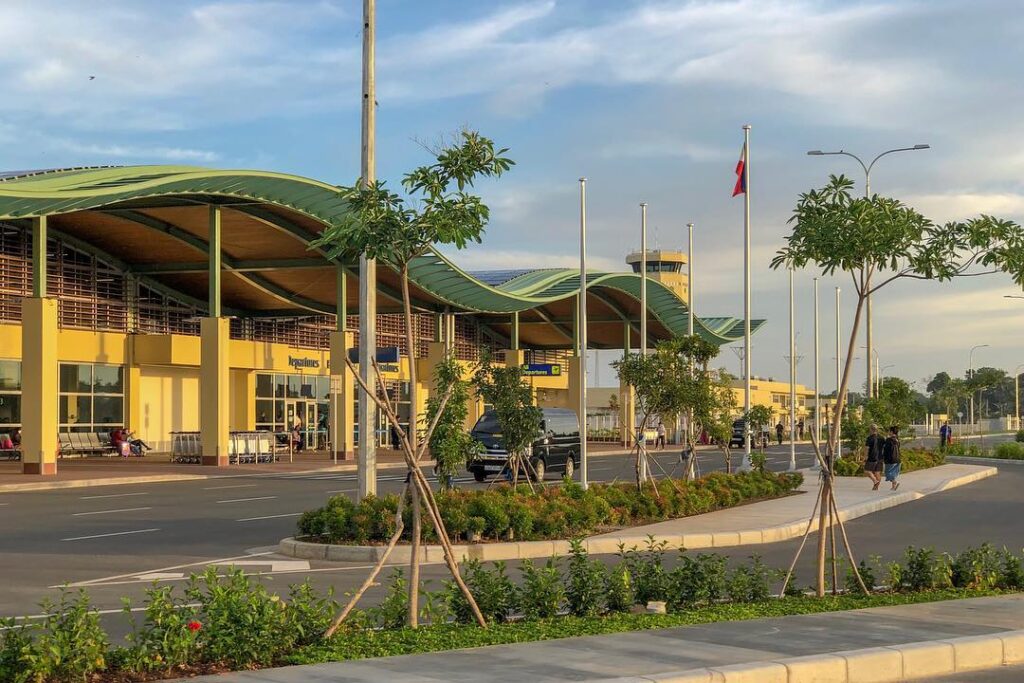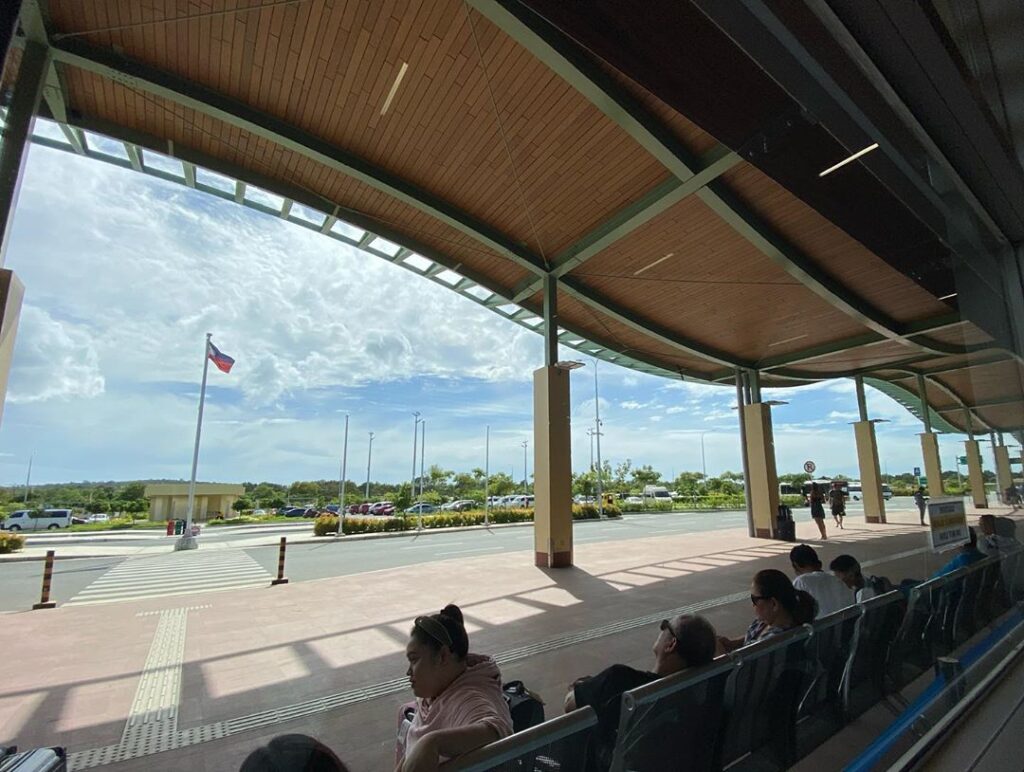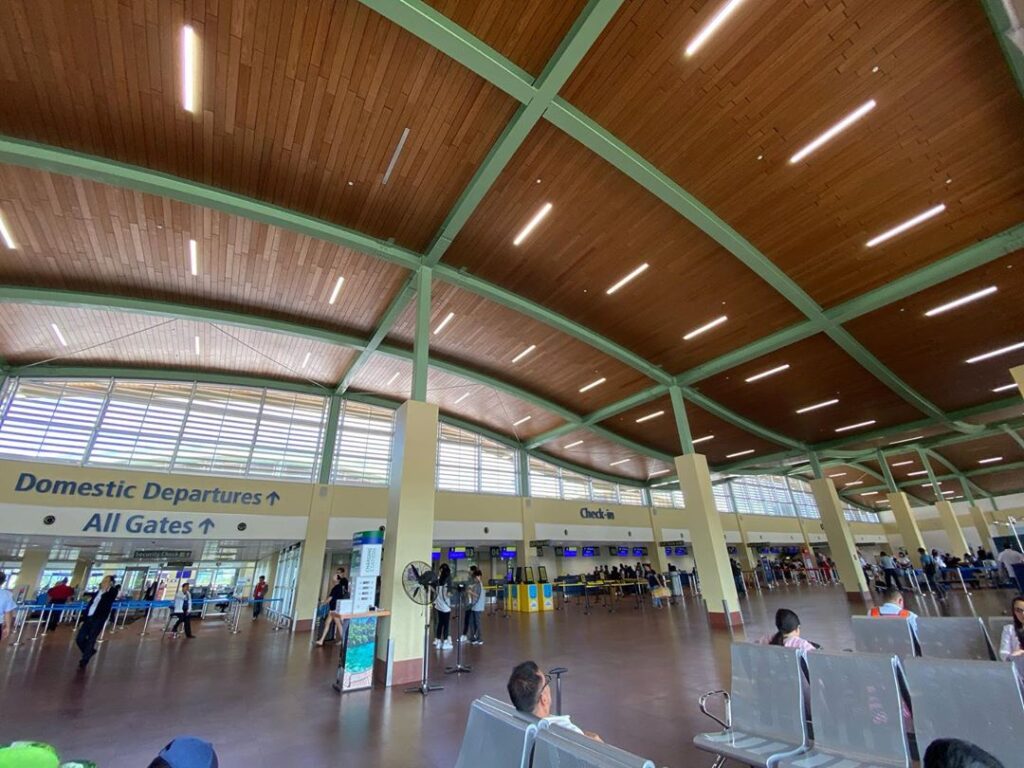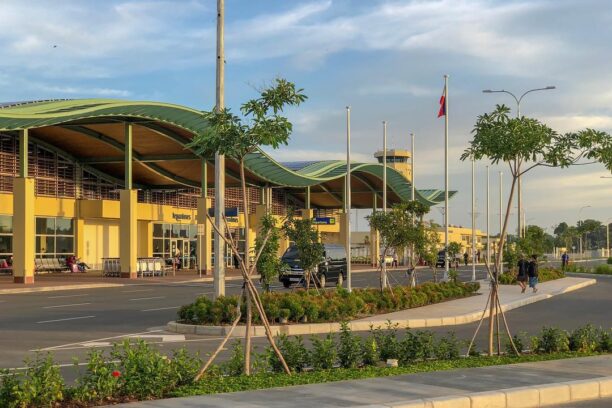With Bohol as the Philippines’ premiere eco-tourism destination, it only seems fitting that its airport has more sustainability efforts. Panglao International Airport has been dubbed the “green gateway” to Bohol because of its energy-saving features. With the closure of Tagbilaran Airport last November 2018, all flights have moved to Panglao. But why the need for a new airport anyway?

Compared to Tagbilaran Airport, Panglao Airport is ten times larger than its predecessor. With a bigger space, more flights to the island can now be accommodated. We detail the other differences between Tagbilaran Airport and Panglao Airport below.
Table of Contents
Panglao Airport Location
Panglao International Airport is only a 10-minute drive to Alona beach and a 30-minute drive to Tagbilaran City. Despite now being based in Panglao, the same airport designator (TAG) is used. To check for flights to and from Bohol, click here.
As mentioned, Panglao Airport has a much larger space available. It now serves international flights, whereas Tagbilaran Airport only catered to Philippine domestic flights. Direct flights to and from Korea and China are already operating. On top of that, Panglao Airport has evening flights available, unlike its Tagbilaran counterpart. Panglao Airport was designed to accommodate up to 2 million passengers a year compared to Tagbilaran Airport’s 800,000 yearly passengers.
Taxis are available for hire to take you directly to your destination in Alona or Tagbilaran. Klook offers private transfers from Panglao Airport as well, you can book a ride in advance here.
Alternatively, there are buses right outside the airport that pass by both areas. Public buses will pass through Alona first. If you alight here, the fare is 40 PHP. Stay on the bus and it’ll take you to Tagbilaran’s Dao Terminal for 50 PHP. Make sure to check with your accommodation for free airport shuttles!
Panglao Airport Green Initiatives

Bohol’s Panglao International Airport is not only modern by design but also in its energy-saving facilities. Solar panels are installed on the roof of passenger terminals. The solar energy harnessed by these panels is used to power a third of the airport’s energy. It supports the hot water supply system as well as the air conditioning. Because of the natural ventilation, air conditioning is needed only in the pre-departure area.
The airport also collects rainwater to be reused. For lighting, the airport relies on natural light and LED lights. If you look around the area, trees, shrubs, and grass surround the perimeter of Panglao airport. Greenery was planted all over to further reduce carbon dioxide emissions. With all these eco-friendly initiatives, the airport hopes to prevent 18 tons of carbon emissions per year.
Panglao Airport Facilities

Just like all airports, there is a check-in hall and baggage claim area. Lounge chairs are available all over the vicinity. A help and information desk is there to assist passengers concerns. There are small food booths but no proper restaurants yet. For those who want to do some last-minute shopping, head to the duty-free shops. Upon arrival, you can hire car rental services. Or if you already have a car, you can bring it to the airport without having to worry about parking.
Ready to plan your trip to Bohol? Don’t miss the Chocolate Hills, tarsiers, and more! Read about our recommended spots for first-time visitors here.
Where to Stay in Bohol
Looking for a hotel? Check out these highly-rated properties on Agoda
Related Destinations
*Last updated: March 26, 2024

